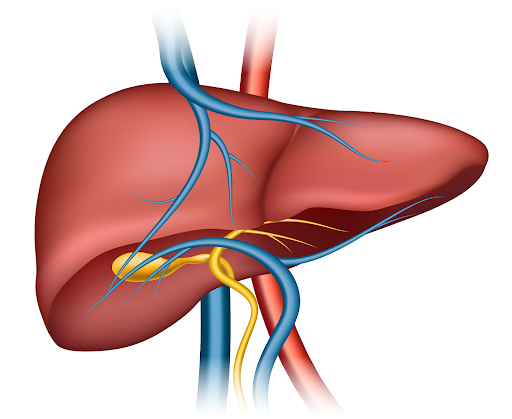
Non-Surgical Ways to Reverse Fatty Pancreas: Diet, Exercise, and Medication
A healthy pancreas is vital for digestion and blood sugar control. When this organ becomes overloaded with fat, its ability to function efficiently begins to decline. This can cause indigestion, unstable glucose levels, and metabolic discomfort. Fortunately, a combination of non-surgical measures, dietary changes, regular exercise, and appropriate medical guidance can help restore pancreatic health.
A fatty pancreas develops when fat deposits accumulate in pancreatic tissue, much like fat builds up in the liver. It often progresses silently and is discovered during scans for other health issues. With the right lifestyle modifications and timely intervention, it is possible to reverse the condition naturally.
Understanding Fat Accumulation in the Pancreas
The pancreas performs two key functions: producing digestive enzymes and regulating blood sugar levels through the production of insulin. When excess fat infiltrates it, these functions are disrupted. This can lead to poor digestion, fluctuating blood sugar levels, and chronic inflammation.
Many people remain unaware of pancreatic fat until imaging tests reveal its presence. Detecting it early allows for lifestyle-based treatment that can prevent more serious complications such as pancreatitis or diabetes.
Restoring Balance Through Diet
Diet is one of the most effective tools for reversing pancreatic fat. Making mindful food choices can improve metabolism, promote weight loss, and reduce inflammation. A balanced, nutrient-rich approach supports both pancreatic and overall health. Here are some dietary practices that can help:
- Choose Whole and Natural Foods: Opt for vegetables, fruits, whole grains, lean proteins, and healthy fats such as olive oil and nuts. These foods supply nutrients without adding excess calories or harmful fats.
- Watch Portion Sizes: Smaller, balanced meals throughout the day help manage calorie intake and stabilise energy levels. Overeating, even healthy foods, can lead to fat accumulation.
- Reduce Sugar and Refined Carbohydrates: Replace processed snacks, sugary drinks, and white bread with fibre-rich foods like oats, brown rice, and millets to keep blood sugar under control.
- Add Antioxidant-Rich Options: Include foods like berries, spinach, and green tea, which contain antioxidants that reduce inflammation and aid in tissue repair.
Consistent, balanced eating not only reduces pancreatic fat but also supports long-term digestive and metabolic health.
The Impact of Exercise on Pancreatic Health
Physical activity plays a major role in reducing internal fat and improving insulin sensitivity. Regular movement enhances the body’s ability to regulate blood sugar and improves pancreatic performance. Some effective forms of exercise include:
- Aerobic Exercises: Walking, swimming, or cycling for at least 30 minutes daily helps burn visceral fat and boosts circulation.
- Strength and Resistance Training: Building lean muscle through weight training two to three times a week can improve glucose metabolism and reduce fat storage.
- Everyday Movement: Small actions, such as taking the stairs, doing light stretching, or taking post-meal walks, can make a meaningful difference in overall metabolism.
Staying active supports healthy weight management and helps the pancreas work more efficiently over time.
Medication Support Under Expert Care
While lifestyle measures form the foundation of treatment, medication may be required in some cases to manage associated conditions such as insulin resistance or high cholesterol. Medical supervision ensures that medicines are used safely and effectively.
- Insulin Sensitisers: Drugs like Metformin help the body use insulin more effectively, thereby reducing fat accumulation in internal organs.
- Lipid-Lowering Medication: These medicines help control cholesterol and triglyceride levels, limiting further fat buildup.
Any medication should be taken strictly under professional guidance, as unsupervised use can interfere with other treatments or cause side effects.
Regular Health Check-Ups and Monitoring
Regular medical check-ups are essential for tracking progress and adjusting treatment plans. Imaging tests, such as ultrasound or MRI scans, can help monitor fat levels in the pancreas. Routine blood tests also help assess glucose and lipid profiles.
Periodic evaluation enables the early identification of any new issues and supports timely intervention, thereby improving the overall outcome of lifestyle-based management.
Lifestyle Changes for Long-Term Results
Beyond diet and exercise, daily habits significantly affect pancreatic recovery and long-term health. Incorporating these simple changes helps sustain results and prevent recurrence.
- Maintain a Healthy Weight: Even modest weight loss of 5–10% can improve pancreatic function and hormone balance.
- Manage Stress Levels: High stress affects metabolism and digestion. Activities such as meditation, yoga, or breathing exercises can help restore hormonal balance.
- Prioritise Sleep: Getting adequate rest helps regulate appetite, improve metabolism, and reduce fat storage.
- Avoid Alcohol and Smoking:Both substances can damage pancreatic tissue and slow down recovery. Reducing or quitting them supports long-term health.
Adopting these habits consistently can promote sustained recovery and a better quality of life.
When to Seek Medical Advice
If symptoms such as persistent bloating, abdominal discomfort, or inconsistent appetite occur, it is important to consult a qualified specialist. Early medical guidance prevents complications and ensures an appropriate treatment plan.
A professional assessment, combined with a healthy lifestyle, provides the safest and most effective path to reversing pancreatic fat without surgery.
Conclusion
Reversing fat accumulation in the pancreas is possible through consistency, awareness, and expert guidance. A balanced diet, regular exercise, and prescribed medication can work together to restore healthy pancreatic function. Managing fatty pancreas requires early detection and a steady commitment to lifestyle improvement. With careful monitoring and continuous effort, maintaining pancreatic health and long-term metabolic stability becomes possible.



